Description
Test Bank for Pediatric Nursing: The Critical Components of Nursing Care 2nd Edition Rudd Chapter 1-22
Kathryn Rudd, Diane Kocisko, ISBN: 9780803676565, ISBN: 9780803676558, ISBN-13: 9780803666535, ISBN-13: 9780803666535
Table of Contents
Pediatric Nursing: An Overview
1. Issues and Trends in Pediatric Nursing
2. Standards of Practice and Ethical Considerations
Psycho-Social-Cultural Assessment of the Child and the Family
3. Family Dynamics and Communicating with Children and Families
4. Cultural, Spiritual, and Environmental Influences on the Child
5. End-of-Life Care
Growth and Development of the Child
6. Growth and Development
7. Newborns and Infants
8. From Toddlers to Preschoolers
9. School-Age Children
10. Adolescents
Common Illnesses or Disorders in Childhood and Home Care
11. Respiratory Disorders
12. Cardiovascular Disorders
13. Neurological and Sensory Disorders
14. Mental Health Disorders
15. Gastrointestinal Disorders
16. Renal disorders
17. Endocrine disorders
18. Reproductive and Genetic Disorders
19. Hematologic, Immunologic, and Neoplastic Disorders
20. Musculoskeletal Disorders
21. Dermatologic Diseases
22. Communicable Diseases
Chapter 1 Issues and Trends in Pediatric Nursing
MULTIPLE CHOICE
1. The nurse has provided a presentation to middle school children about nursing as a career. One of the children stated that he wanted to be a pediatric nurse, because he wants to take care of babies and little “kids.” What would be an appropriate response to this middle school–aged child?
1. “Nursing is a general practice; all nurses must know how to take care of all ages of patients.”
2. “As a pediatric nurse, you would get to care for babies and little kids as well as children through their teenage years.”
3. “What you are describing is actually a neonatal nurse. Neonatal nurses work with newborn babies, toddlers, and preschool-age children.”
4. “Being a pediatric nurse requires a master’s degree, so be sure to work hard in school!”
ANS: 2
Chapter: Chapter 1 Issues and Trends in Pediatric Nursing
Chapter Learning Objective: 1. Define pediatric nursing.
Page: 3
Heading: Introduction to Pediatric Nursing
Integrated Processes: Teaching and Learning
Client Need: Psychosocial Integrity
Cognitive Level: Application [Applying]
Concept: Cognition
Difficulty: Moderate
Feedback
1 This is incorrect. Nurses can specialize in a number of areas. Pediatrics is one of these areas.
2 This is correct. Pediatric nursing care requires the nurse to use assessment and evaluation tools that are unique to infants, children, and adolescent populations, not just babies and young children.
3 This is incorrect. This is not accurate. Neonatal nurses typically provide care to infants. They would not provide care to toddlers or preschool-age children.
4 This is incorrect. A master’s degree is not required to be a pediatric nurse. However, advanced degrees and additional certification are available for pediatric nurses.
PTS: 1 CON: Cognition
2. The medical-surgical float nurse is assigned to the pediatric unit for the first time and states that the skills are “the same as general nursing since children are little adults with smaller bodies.” What component of pediatric nursing contraindicates this statement?
1. Pediatric nursing involves care based on the developmental level of the patient.
2. Pediatric nursing involves the patient’s family in the plan of care.
3. Pediatric nursing in based on prevention of infectious diseases.
4. Pediatric nursing involves cultural sensitivity in patient care.
ANS: 1
Chapter: Chapter 1 Issues and Trends in Pediatric Nursing
Chapter Learning Objective: 6. Describe the roles of the pediatric nurse.
Page: 3
Heading: Introduction to Pediatric Nursing > Nursing Care for Children Versus Care for Adults
Integrated Processes: Nursing Process
Client Need: Physiological Integrity: Reduction of Risk Potential
Cognitive Level: Analysis [Analyzing]
Concept: Safety
Difficulty: Moderate
Feedback
1 This is correct. Pediatric nursing involves not only general nursing care and planning but also the developmental level of the patient. The history of pediatric nursing describes how the role has evolved into a specialty.
2 This is incorrect. Although this is a component of pediatric nurses, it does not answer the concern regarding the “little adults” comment.
3 This is incorrect. Although this is a component of pediatric nurses, it does not answer the concern regarding the “little adults” comment.
4 This is incorrect. Although this is a component of pediatric nurses, it does not answer the concern regarding the “little adults” comment.
PTS: 1 CON: Safety
3. The culturally sensitive pediatric nurse is aware of the changes in the racial population of the United States. Which of the following reflects the historical changes in the projected demographics of the U.S. pediatric population in 2020?
1. The American Indian and Alaska Native population will continue to decrease.
2. Less than half of the children will represent less than half of the population.
3. The Asian children will reflect no change from 2015 into 2020.
4. Non-Hispanic children who represent two or more races will increase in 2020.
ANS: 2
Chapter: Chapter 1 Issues and Trends in Pediatric Nursing
Chapter Learning Objective: 4. Describe the projected racial population changes in the United States.
Page: 5
Heading: Racial Makeup of American Children
Integrated Processes: Nursing Process
Client Need: Health Promotion and Maintenance
Cognitive Level: Application [Applying]
Concept: Culture
Difficulty: Moderate
Feedback
1 This is incorrect. Although this is projected to occur, it is not of historical significance.
2 This is correct. This will be the first time in history that less than 50% of the children aged 0 to 17 will be white non-Hispanic.
3 This is incorrect. Although this is projected to occur, it is not of historical significance.
4 This is incorrect. Although this is projected to occur, it is not of historical significance.
PTS: 1 CON: Culture
4. The nurse at a family clinic is providing care to an adolescent patient diagnosed with diabetes. The patient has verbalized discomfort with the feelings of isolation when unable to drink alcohol with their friends. Which of the following would be the most appropriate response to this statement?
1. “Drinking alcohol is not only illegal but dangerous for your blood sugar control and overall well-being.”
2. “You can still drink alcohol, in moderation, if you control the sugar spike with more insulin.”
3. “Prepare for alcohol intake with more water and less carbohydrates before drinking in order to slow sugar spikes.”
4. “It is understandable that you want to be included, but perhaps we can work out a plan on how to avoid those situations.”
ANS: 4
Chapter: Chapter 1 Issues and Trends in Pediatric Nursing
Chapter Learning Objective: 3. Describe the differences between nursing care of infants, children, and adolescents and care of the adult population.
Page: 5
Heading: Role of the Pediatric Nurse
Integrated Processes: Communication and Documentation
Client Need: Physiological Integrity: Reduction of Risk Potential
Cognitive Level: Application [Applying]
Concept: Safety; Self
Difficulty: Moderate
Feedback
1 This is incorrect. This is not a solution to the patient’s issues. The patient reports feeling left out due to the disease process. This does not address the issue in a developmentally appropriate manner to promote the optimal physical, psychological, and social well-being.
2 This is incorrect. This encourages unsafe health habits and does not address the issue with the disease process and the adolescent’s need for inclusion.
3 This is incorrect. This is not therapeutic communication, nor is it safe for the adolescent. It does not care in a developmentally appropriate manner to promote the optimal physical, psychological, and social well-being of the adolescent.
4 This is correct. Helping the adolescent develop anticipatory guidance facilitates independence and healthy responses to peer pressure.
PTS: 1 CON: Safety | Self
5. Which statement best describes the common core concepts of the different models of pediatric nursing?
1. All models focus on the open communication between the child and nurse.
2. All models focus on importance of family relationship to the child.
3. All models focus on safeguarding the child’s dignity during care.
4. All models focus on coordination of care needs that arise during illness.
ANS: 2
Chapter: Chapter 1 Issues and Trends in Pediatric Nursing
Chapter Learning Objective: 5. Identify models of care applied to pediatric nursing.
Page: 5
Heading: Models of Care in Pediatric Nursing
Integrated Processes: Teaching and Learning
Client Need: Physiological Integrity: Physiological Adaptation
Cognitive Level: Analysis [Analyzing]
Concept: Patient-Centered Care
Difficulty: Moderate
Feedback
1 This is incorrect. This omits the necessity of family relationships in the care and development of the child.
2 This is correct. This is a common core concept in family-centered care, relationship-based care, and pediatric medical home care.
3 This is incorrect. This is a concept based on patient relationship-based care.
4 This is incorrect. This is a component of pediatric medical home care.
PTS: 1 CON: Patient-Centered Care
6. Which of the following tasks is associated with the pediatric medical home care model of pediatric nursing?
1. The nurse refers the family to a childhood cancer support group prior to discharge from the hospital.
2. The nurse includes a simple explanation of the procedure to the child based upon the child’s developmental level.
3. The nurse includes the family’s cultural celebrations and observations while providing care to the child.
4. The nurse develops the plan of care with the child and family as the focal point of the interventions.
ANS: 1
Chapter: Chapter 1 Issues and Trends in Pediatric Nursing
Chapter Learning Objective: 5. Identify models of care applied to pediatric nursing.
Page: 5
Heading: Models of Care in Pediatric Nursing > Pediatric Medical Home
Integrated Processes: Teaching and Learning
Client Need: Physiological Integrity: Physiological Adaptation
Cognitive Level: Application [Applying]
Concept: Family Dynamics
Difficulty: Moderate
Feedback
1 This is correct. The pediatric medical home care model coordinates care and includes referrals for community services for nonmedical needs.
2 This is incorrect. This is a core concept of relationship-based care.
3 This is incorrect. This is a core concept of cultural sensitivity and family-centered care.
4 This is incorrect. This is a core concept of relationship-based care.
PTS: 1 CON: Family Dynamics
7. The pediatric nurse begins a research project on 8-year-old patients with the medical diagnosis of pediatric acute onset neuropsychiatric syndrome, PANS. The family has consented to the research, but as the nurse begins to administer the intervention, the patient refuses to cooperate. What is the appropriate response to this refusal?
1. The nurse should discuss with the family the options of performing the intervention without the child’s knowledge.
2. The nurse should explain to the child that this is necessary and promise a reward at the end of the research project.
3. The nurse should refuse to perform the intervention until the child consents to the intervention and project.
4. The nurse should discuss the pros and cons of the research project with the child and focus on the outcomes.
ANS: 3
Chapter: Chapter 1 Issues and Trends in Pediatric Nursing
Chapter Learning Objective: 6. Describe the roles of the pediatric nurse; 8. identify current issues and trends in pediatric nursing practice, education, and research.
Page: 6
Heading: Issues in Pediatric Nursing
Integrated Processes: Nursing Process
Client Need: Physiological Integrity: Pharmacological and Parenteral Therapies
Cognitive Level: Analysis [Analyzing]
Concept: Communication, Legal
Difficulty: Moderate
Feedback
1 This is incorrect. This could be considered assault and battery against the child. Children aged 7 years and older can assent or dissent to be in a clinical trial.
2 This is incorrect. This would be considered bribery, and per the IRB guidelines, a clinical trial should not promise any direct rewards.
3 This is correct. Children aged 7 years and older can assent or dissent to be in a clinical trial.
4 This is incorrect. The 8-year-old child may not have the faculties or cognitive development to comprehend “pros and cons” of a research project.
PTS: 1 CON: Communication | Legal
8. A nurse is providing relationship-based care to a pediatric patient. Which of the following is a challenge the nurse is likely to encounter while using this model of care?
1. Maintaining a sterile field for a procedure with a restless toddler
2. Communicating with the blended family on regular basis
3. Treating children with antibiotic-resistant illnesses
4. Caring for a larger number of children with autism spectrum disorders and childhood depression
ANS: 2
Chapter: Chapter 1 Issues and Trends in Pediatric Nursing
Chapter Learning Objective: 8. Identify current issues and trends in pediatric nursing practice, education, and research.
Page: 6
Heading: Issues in Pediatric Nursing
Integrated Processes: Nursing Process
Client Need: Safe and Effective Care Environment
Cognitive Level: Analysis [Analyzing]
Concept: Patient-Centered Care
Difficulty: Moderate
Feedback
1 This is incorrect. This is a fundamental issue in nursing care, not a relationship issue.
2 This is correct. Maintaining communication with families and caregivers has become more challenging due to the dynamics of current families.
3 This is incorrect. There has been an increase in the number of antibiotic-resistant illnesses. This is a trend that has influenced nursing roles and responsibilities, not relationship-based care.
4 This is incorrect. This is a trend that has influenced nursing roles and responsibilities, not relationship-based care.
PTS: 1 CON: Patient-Centered Care
9. The pediatric nurse desires to expand her career options to become the hospital’s nurse educator of pediatrics. Which of the following is necessary for this nurse to achieve this career goal?
1. The nurse must earn a minimum of a master’s degree in nursing.
2. The nurse must earn a minimum of a doctorate degree in nursing.
3. The nurse must implement and develop research in nursing practice.
4. The nurse must implement a plan to obtain certification in pediatrics.
ANS: 1
Chapter: Chapter 1 Issues and Trends in Pediatric Nursing
Chapter Learning Objective: 7. Identify the different fields of pediatric nursing and the education required for each.
Page: 6
Heading: Role of the Pediatric Nurse > Where Pediatric Nurses Work
Integrated Processes: Nursing Process
Client Need: Physiological Integrity
Cognitive Level: Comprehension [Understanding]
Concept: Professionalism
Difficulty: Moderate
Feedback
1 This is correct. Pediatric nurses with master’s degree preparation are often employed as nurse educators. Many academic settings require nursing instructors to have a nursing doctorate or be actively working to obtain a doctorate.
2 This is incorrect. Pediatric nurses with master’s degree preparation are often employed as nurse educators. Many academic settings require nursing instructors to have a nursing doctorate or be actively working to obtain a doctorate. (Keyword: minimum)
3 This is incorrect. Although nurses with doctorates may develop and implement research programs for hospitals, this is not necessary to obtain this position.
4 This is incorrect. Although nurses may obtain certification in pediatrics, it is often not the minimum requirement for nurse educator.
PTS: 1 CON: Professionalism
10. The school nurse is developing a teaching session for the population of children in a middle school. The nurse has determined that the greatest need for the overall health of the children is promotion of healthy foods. Which of the following interventions is most likely to be effective?
1. Remove all unhealthy snacks from the vending machines.
2. Have a poster contest on healthy eating options.
3. Survey the student population during lunch breaks.
4. Engage the students in healthy choices with cooking lessons.
ANS: 4
Chapter: Chapter 1 Issues and Trends in Pediatric Nursing
Chapter Learning Objective: 8. Identify current issues and trends in pediatric nursing practice, education, and research.
Page: 7
Heading: Trends in Pediatric Nursing Practice > Obesity
Integrated Processes: Nursing Process
Client Need: Physiological Integrity: Reduction of Risk Potential
Cognitive Level: Analysis [Analyzing]
Concept: Health Promotion
Difficulty: Moderate
Feedback
1 This is incorrect. This would only prevent the students from buying unhealthy foods via the vending machine, not help them make choices.
2 This is incorrect. Although this may help with a competition, it may not facilitate lifestyle changes.
3 This is incorrect. Although this may help assess the student’s lunchtime eating habits, it would not help with the full picture of the problem.
4 This is correct. Engaging the students in healthy options would promote active learning and new skills.
PTS: 1 CON: Health Promotion

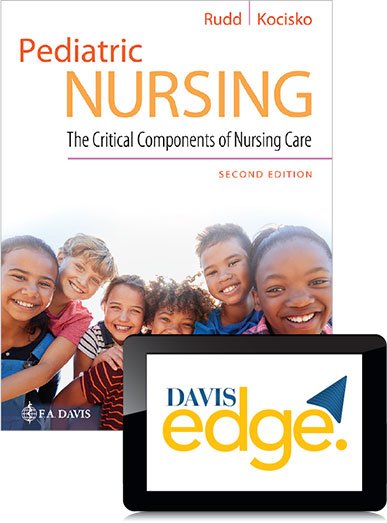
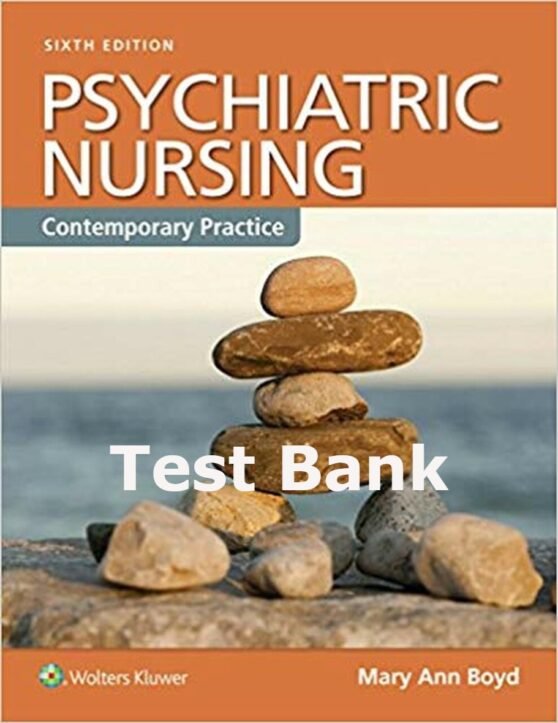
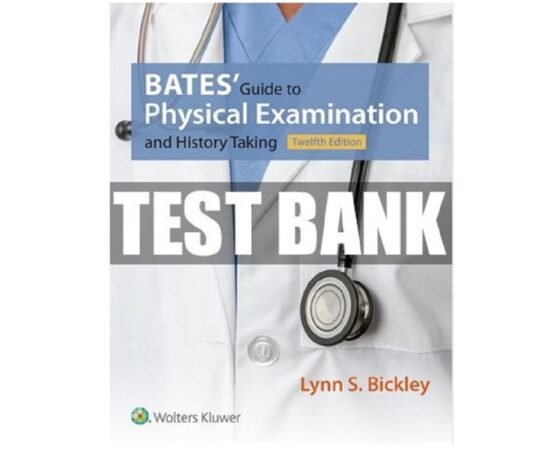
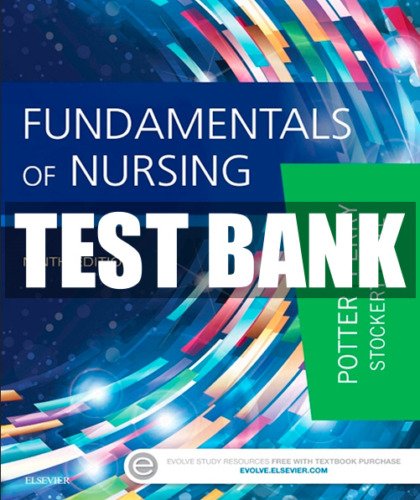
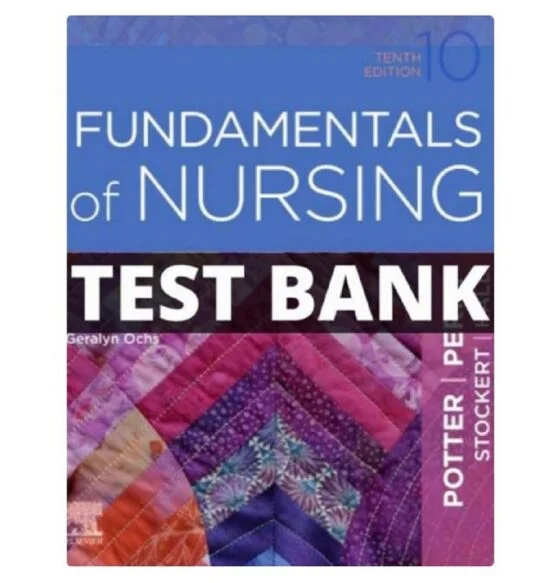
Reviews
There are no reviews yet.